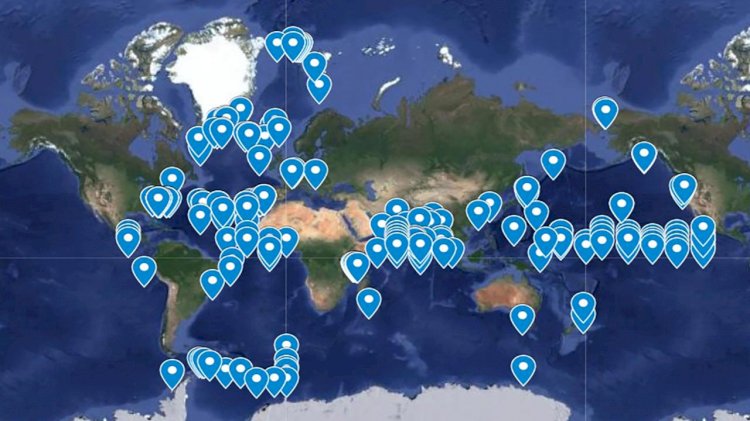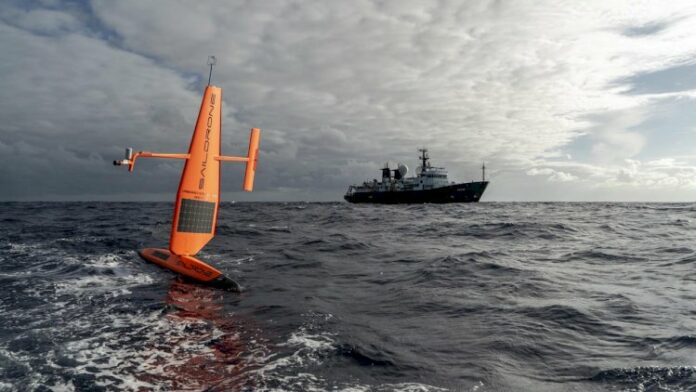In the paper, “Air-Sea Fluxes with a Focus on Heat and Momentum,” Meghan F. Cronin, Chelle L. Gentemann, et al. discuss a need for a global, integrated observational strategy to measure air-sea fluxes that meets accuracy targets equal or better than OceanSITES reference station moorings and research vessels.
The paper calls for the establishment, by 2030, of a global array including autonomous vehicles, buoys, and research vessels for in situ observation of surface flux variables; approximately 1,000 individual platforms are needed for global coverage if each vehicle patrols roughly one million square kilometers, as well as an expanded OceanSITES network in some two dozen key regions.
OceanSITES is a relatively young network of some 22 deep-water reference stations that provide real-time data access, high-resolution measurements, and multiyear time scales for dozens of variables. The design of a global air-sea flux monitoring system will require regional adjustments and densities based on ocean conditions, flux patterns, and operational realities.

The anticipated outcome of the proposed 2030 Air-Sea Flux Observing System is improved prediction of long-term weather and climate influenced by the oceans and quantification of ocean carbon uptake and resulting ocean acidification.
More than eight essential ocean and climate variables (EOVs, ECVs) are required to compute various air-sea fluxes including sea and air temperature, atmospheric pressure, wind speed and direction, humidity, and solar radiation (longwave and shortwave). This data has historically been collected piecemeal via a diverse assortment of moored buoys, floats, and satellites. Each platform collects a different limited set of variables. Satellite sensors, for example, are unable to measure sea surface humidity or air temperature with the accuracy required to resolve air-sea heat fluxes because of the intervening atmosphere.
Ocean processes drive large-scale planetary patterns affecting weather and climate, food supply, shipping, and socio-economic issues. Understanding these processes is critical to sustainably managing resources, planning and preparing for natural disasters, and adapting to changes taking place in the environment.



